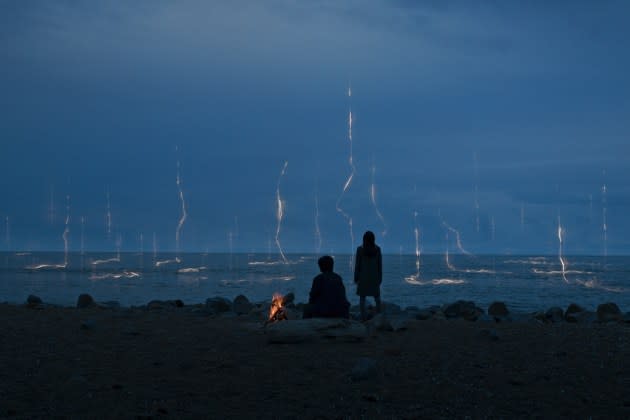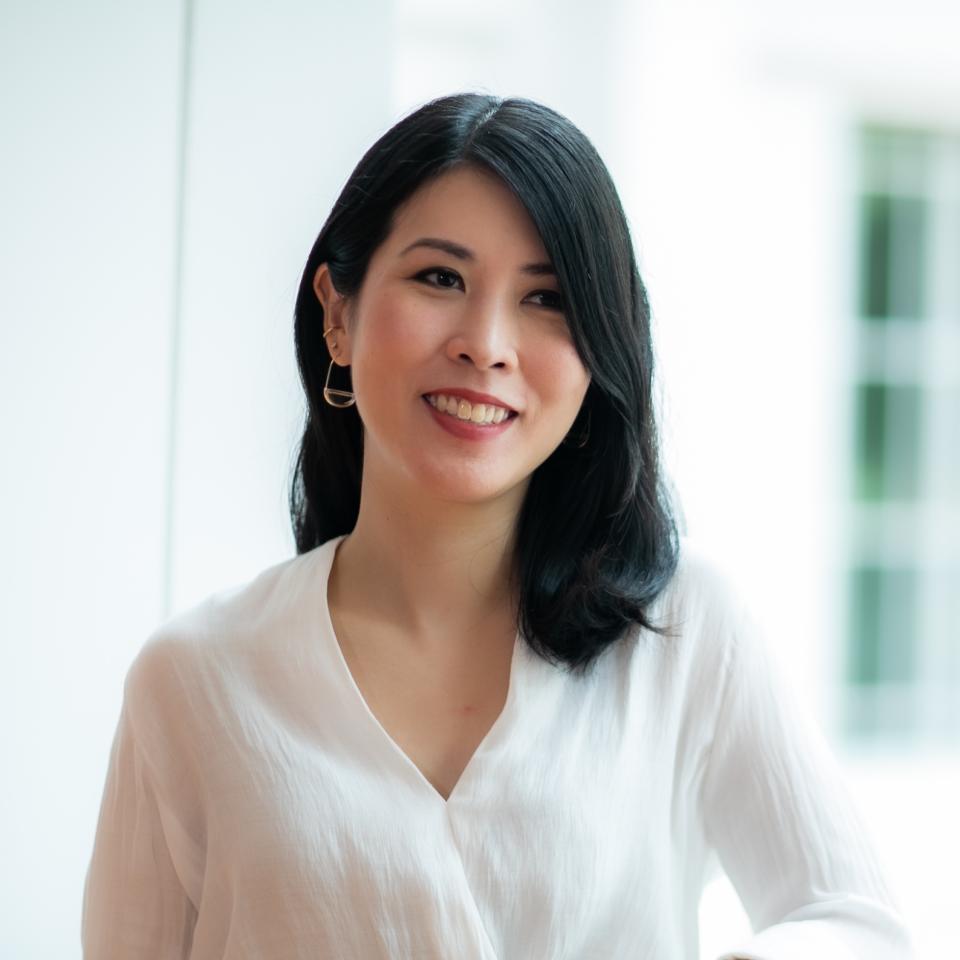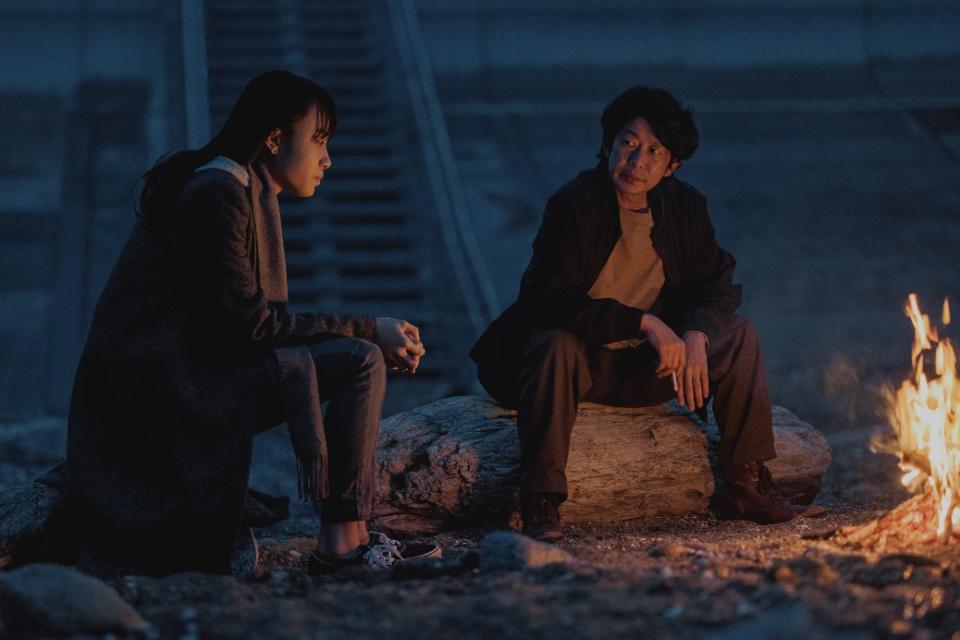Singapore’s Nicole Midori Woodford On Hauntings & Echoes Of Trauma In ‘Last Shadow At First Light’ – APSAs
- Oops!Something went wrong.Please try again later.

Singaporean writer-director Nicole Midori Woodford is on a roll with her debut feature, Last Shadow At First Light, which premiered in New Directors at San Sebastian film festival and has two nominations at the Asia Pacific Screen Awards (APSAs) for best screenplay and best performance (Mihaya Shirata).
Filmed in Singapore and Japan, the film follows a Singaporean teenage girl with a special connection to the spiritual world who goes on a road trip to uncover the mystery of her Japanese mother’s supposed death. She has been told her mother died by suicide during the recovery effort following the Japan 2011 earthquake and tsunami that killed her maternal grandparents. But she doesn’t believe this to be true.
More from Deadline
Meeting up with an uncle in Tokyo, they travel together to a town that was swept away by the tsunami although her uncle is more interested in the local pachinko parlour than helping with the quest. A series of ghostly encounters then forces both of them to face the trauma that this disaster has left imprinted on their lives.
Led by producers Jeremy Chua from Singapore and Shozo Ichiyama from Japan, the film is a co-production between Singapore’s Potocol, Japan’s cogitoworks, Slovenia’s Studio Virc, Fire and Ice Media from the Philippines, Singapore’s Purple Tree Content, Hello Group and True Colour Media and Indonesia’s KawanKawan Media. Executive producers include Happy Infinite Productions (Philippines), Jermyn Wong and Sally Ng.
Mihaya Shirata plays the young girl while Masatoshi Nagase, who starred in Jim Jarmusch’s Mystery Train, plays the uncle and Mariko Tsutsui (Harmonium) and Peter Yu (A Land Imagined) round out the cast. The film was shot by Singapore-based Japanese cinematographer Hideho Urata (A Land Imagined, Plan 75).
Midori Woodford has made previously made short films that competed at festivals including Busan, Clermont-Ferrand and Singapore. She has also worked for Eric Khoo’s Singapore-based Zhao Wei Films and directed an episode of HBO Asia anthology series Folklore Season 2, produced by Khoo.
Since San Sebastian, Last Shadow At First Light has also screened at Filmfest Hamburg and China’s Pingyao International Film Festival and is now heading for Tokyo Filmex, QCinema in the Philippines, Jogja-NETPAC Asian Film Festival in Indonesia and Singapore International Film Festival.
DEADLINE: How much is the story inspired by your own family circumstances?
NICOLE MIDORI WOODFORD: My family background is quite mixed – my grandmother was from a small town called Kure, which is just outside of Hiroshima, and after the Second World War she met my grandfather, who was British and Portuguese with a bit of Goan, and they moved to Singapore.

Some time ago, when I was going through a difficult time, my grandmother told me that she survived the atomic bomb going off in Hiroshima just because she was late for work that day. She had to re-evaluate her life after that, because everything around her was gone, and she married my grandfather because all the Japanese men had passed away. I think it was her way of telling me to move forward and not be too preoccupied with the past.
So that conversation kept coming back to me and I started thinking about a family portrait where different members are haunted by different things in their lives. But at the heart of the story, I was very interested in a young girl who could see spirits, because I’ve had some strange encounters myself, so I based the supernatural side on my own experiences. There’s also the concept of this young girl who is trying to reconnect with a mother who cannot love her because of her own trauma.
DL: How did you go about researching the aftermath of the tsunami and which locations did you use?
NMW: Most of the filming took place in and around Rikuzentakata, one of worst hit cities in the 2011 disaster. I made a few trips to the region with my producer Jeremy before the pandemic, documenting with photographs, and with each trip the place would keep changing as they were building this enormous seawall. I think I felt most connected to that place because it was known for its pine trees, but when all the trees were destroyed by the tsunami, there was just one left standing, which was called the miracle pine. I correlated that idea to some of the family members in the film.
DL: Was it difficult financing and shooting the film during the pandemic?
NMW: We started in 2016 and planned to shoot in 2020, but because of the pandemic had to shoot in November 2021 and April 2022. That part was really stressful for Jeremy because Japan’s borders were closed for three years and we were all sitting there fingers crossed just wondering when it was going to open up. We lost some of the original financing partners when Covid hit because investors pulled out, so the way Jeremy financed it was to go with several smaller partners rather than one or two big partners. We had funding from Singapore Film Commission, Slovenian Film Centre, Purin Pictures and Talents Tokyo Next Masters Support Program, among others.
DL: How did you go about casting?

NMW: We were searching for around a year and a half before we found Mihaya Shirata, who I cast after a three-hour audition in Japan. She didn’t have much experience so I had to train her in acting and speaking Chinese on Zoom for about two years. Of course, I didn’t anticipate that we’d have to do it on Zoom but we went into lockdown on both sides right after we gave her the role. Fortunately, I’m used to working with non-actors, and my way of directing involves a lot of improvisation, so by the time we went to Japan to work with the veteran actors, she was ready.
My process with Masatoshi Nagase was completely different as he’s a veteran Japanese actor who was recommended by our Japanese producer Shozo Ichiyama. We met on Zoom and then later had an almost eight-hour conversation in his office to go through everything in the script. He was more interested in the thinking behind each scene and what I was trying to say. So he barely rehearsed with me and we did most of the blocking on set.
DL: You use a very effective visual representation of lost souls through gold threads that streak across the screen. How did you achieve this technique?
NMW: It was important for me that we didn’t present the aftermath of the disaster as something that was horrific, grotesque or menacing. I wanted it to be veiled in mystery, but reveal itself slowly through these light streaks, that for me were visual manifestations of the essences of people who were swept away.
I used to do medium format photography using larger negative film stock that I would expose multiple times and get these streaks on it. So I told my team I wanted to bring this process into the film, although at first they thought we couldn’t do it because we weren’t shooting slow shutter. But I did a bit more research and realised we could achieve this through visual effects, so I worked with a Slovenian team to bring it to life. I wanted this ephemeral quality almost like scratches of light to visually represent the landscape and how I felt.
DL: What are you working on next?
NMW: Well I’m five months pregnant – I delayed having a baby to make this film – but I’m thinking my next project will be something even more genre, perhaps even a horror film. I’m working on a few ideas now but want to see how the festival run for this film goes first.
Best of Deadline
SAG-AFTRA Interim Agreements: Full List Of Movies And TV Series
Hollywood & Media Deaths In 2023: Photo Gallery & Obituaries
2023 Premiere Dates For New & Returning Series On Broadcast, Cable & Streaming
Sign up for Deadline's Newsletter. For the latest news, follow us on Facebook, Twitter, and Instagram.

